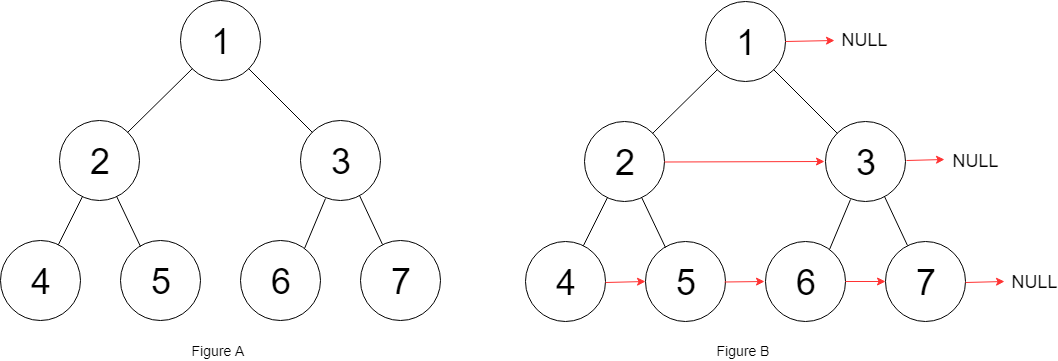[leetcode] 116. Populating Next Right Pointers in Each Node
题目
You are given a perfect binary tree where all leaves are on the same level, and every parent has two children. The binary tree has the following definition:
struct Node {
int val;
Node *left;
Node *right;
Node *next;
}
Populate each next pointer to point to its next right node. If there is no next right node, the next pointer should be set to NULL.
Initially, all next pointers are set to NULL.
Example 1:

Input: root = [1,2,3,4,5,6,7]
Output: [1,#,2,3,#,4,5,6,7,#]
Explanation: Given the above perfect binary tree (Figure A), your function should populate each next pointer to point to its next right node, just like in Figure B. The serialized output is in level order as connected by the next pointers, with '#' signifying the end of each level.
Example 2:
Input: root = []
Output: []
Constraints:
- The number of nodes in the tree is in the range
[0, 212 - 1]. -1000 <= Node.val <= 1000
思路
递归,使用一个数组保存所有同级节点,将这些节点从左到右连接,随后将这些节点的子节点保存至新数组中,再次连接,以此类推,直至数组为空。
代码
python版本:
"""
# Definition for a Node.
class Node:
def __init__(self, val: int = 0, left: 'Node' = None, right: 'Node' = None, next: 'Node' = None):
self.val = val
self.left = left
self.right = right
self.next = next
"""
class Solution:
def connect(self, root: 'Optional[Node]') -> 'Optional[Node]':
if not root:
return root
def recursion(nodes):
if not nodes:
return
for i in range(len(nodes)-1):
nodes[i].next=nodes[i+1]
childs=[]
for node in nodes:
if node.left:
childs.append(node.left)
if node.right:
childs.append(node.right)
recursion(childs)
recursion([root])
return root
本文来自博客园,作者:frankming,转载请注明原文链接:https://www.cnblogs.com/frankming/p/15954970.html

